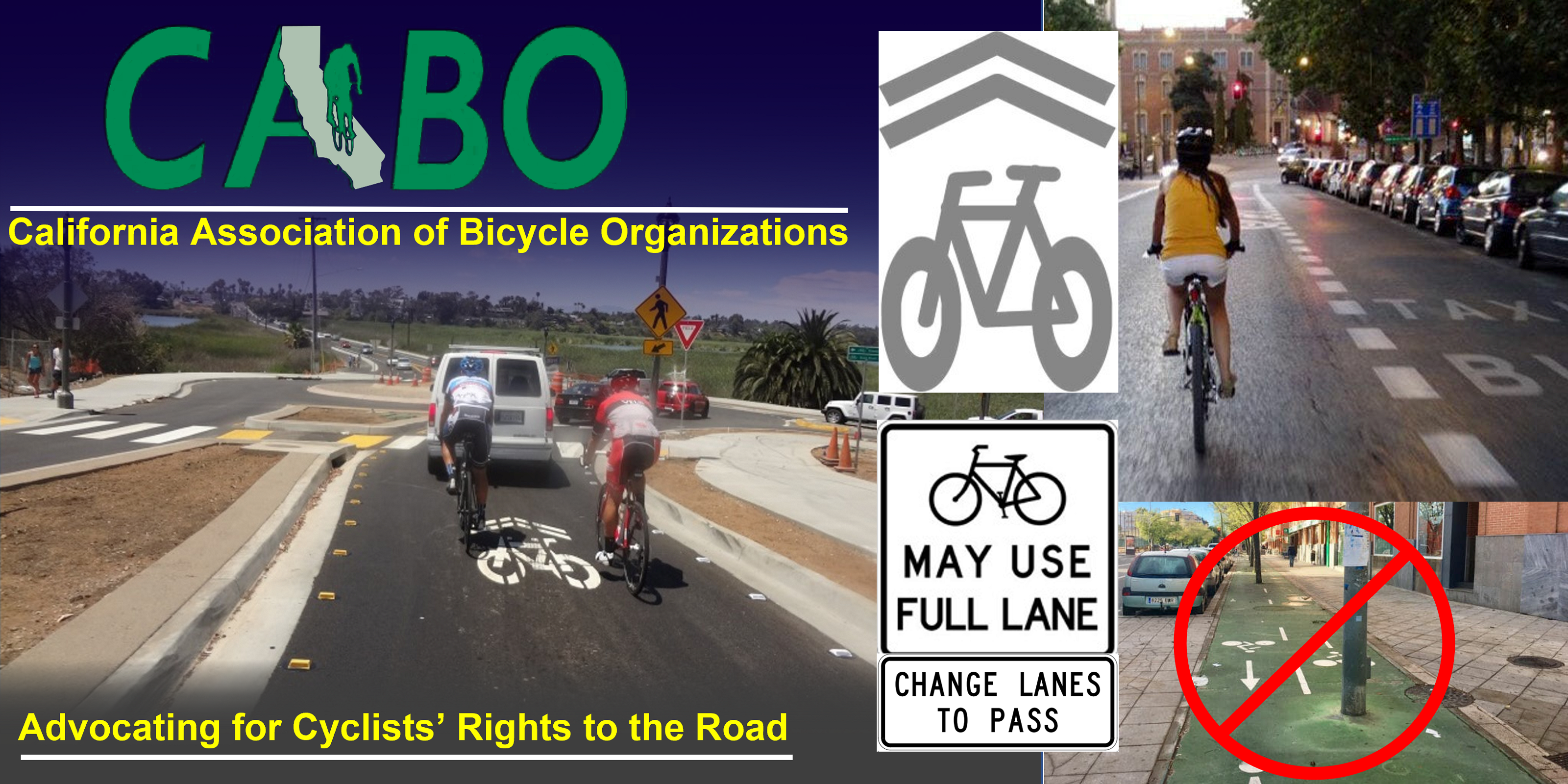We want Caltrans to live up to its responsibility and stated goals to provide for bicycling as well as motor vehicle transportation. When a State Highway is to be unavailable for bicycling there should be a usable other route for people to bike through, right? Or that highway should be made accessible for people to use by bicycle. Seems pretty clear to us.
Here’s what I sent to Caltrans.
…….
Director Dougherty:
I am providing this email and will follow up with a letter on behalf of the members of your California Bicycle Advisory Committee (CBAC), and also on behalf of the Calif. Assoc. of Bicycling Organizations (CABObike.org) and the bicycle travelers who depend on the Adventure Cycling Association for maps of appropriate bicycling routes across the USA.
Caltrans District 8 has refused to make certain shoulders of State Highway/freeways available for bicycle travel in spite of their being no available viable alternative route for bicycling. Viable bicycling routes in California are vital, especially for the “Bicycle Route 66” part of an effort by the Adventure Cycling Assoc. to provide National Trails across the USA.
The present position of District 8 – refusal to allow freeway shoulder use or to provide an alternative route – seems to be contrary to current Caltrans policy for providing for bicycling travel, not just for motor vehicle travel. The refusal also seems to be contrary to State and Highway Code 888, which we understand to place responsibility on Caltrans to provide for bicycle travel either on or adjacent to a State Highway route that is available for motor vehicle travel.
At the December 4, 2014, CBAC members voted to bring to your attention their recommendation that Caltrans/you direct District 8 act to provide for bicycle travel along this route. I do so now.
I will be in Sacramento February 4th and for the next CBAC meeting February 5, 2015. I would like to meet with you about this request. I may be able to also have present a representative from the Adventure Cycling Association who can provide in person more detailed information about this need.
Following is detail is the issue:
There is currently no legal route for cyclists to travel between Ludlow and Barstow California. The I-40 freeway between these two communities is posted “Bicycles Prohibited” and the adjacent legal route, Historic Route 66, also known as the National Trails Highway (NTH) is currently closed to all traffic.
Adventure Cycling’s Bicycle Route 66 maps will go to print in mid-January and will be released to the public in early March.
This route will one day be part of the U.S. Bicycle Route System an AASHTO project that Adventure Cycling supports & provides technical assistance to.
The NTH is currently closed due to flooding. 5 bridges are out and it will take until at least February or March for the bridges to re open. We expect touring cyclists may start as early as March or April.
The NTH road surface is in extremely poor condition and is not safe for cycling
I-40 runs parallel to the NTH and we’ve been informed that the freeway is posted “Bicycle Prohibited” from mile marker 00 to 133
The NTH is closed now and will continue to be closed periodically in the future due to future issues related to storm and flood damage common in the area or construction on the roadway.
Cyclists need a legal and safe way to travel and I-40 is the solution
I-40 has 8 ft shoulders bordered by a rumble strip and the region is very rural with low traffic counts
Bicycle travelers are used to riding periodically on rural freeways
Recommendation
Based upon the fact that Caltrans District 8 has provided no reason for prohibiting bicycles on this section of I-40, the California Bicycle Advisory Council highly recommends Director Dougherty allow bicycle access on I-40 minimally between Exits 2 and 5 around the Marine Base and optimally from Ludlow to Barstow.
The Adventure Cycling Association needs to provide this information on their maps which go to print in January, this is extremely time sensitive.
Please ensure cyclists have a legal route to travel along this 40 mile corridor
Caltrans should consider instituting a future policy that will ensure when a Caltrans manages roadway that is currently posted “Bicycle Prohibited” and the identified adjacent roadway is closed, that there is a procedure to ensure cyclists have a legal and safe way to travel through that corridor.
Thank you.
Jim Baross
CBAC Co-Chair
President, Calif. Assoc. of Bicycling Organizations
San Diego, CA
